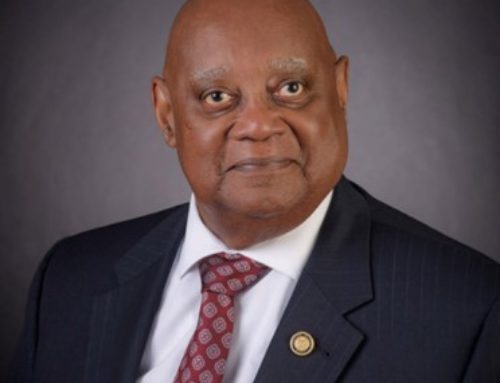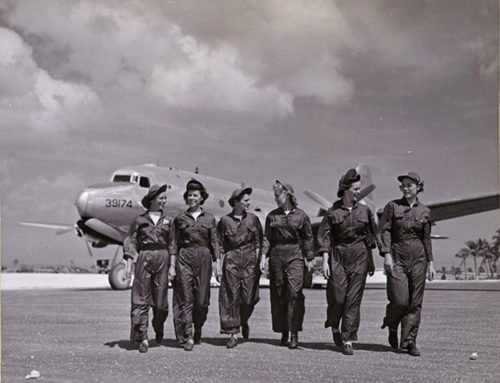In the late summer of 1952, a strange pair of Navy vehicles arrived at Naval Air Station Key West on Boca Chica Key in Florida: the submarine USS SEA POACHER (SS-406) towing a giant blimp called K-86. Dan Summitt, an officer aboard SEA POACHER at the time of the event, explains what happened in his book Tales of a Cold War Submariner.
“We were operating submerged at a couple of hundred feet about thirty miles south of Key West. It seemed we spent most of our time providing target services for the sonar school, also based at Key West. On this day we were providing those services for a helium-filled blimp carrying sonar operator students and also conducting an evaluation of a certain type of ‘dipping’ sonar. We would come to periscope depth every half hour, raise a radio whip antenna, and get directions from the blimp regarding our course, speed, and depth for the next half hour.
“…At noon I assumed the ‘conn.’ My job as conning officer was to stand watch in the conning tower and run the submarine as directed by the captain.
“It was time to check in with the blimp, so I ordered the diving officer to take us to periscope depth. …I raised the whip antenna and called the blimp. ‘What would you like next?’ I asked. ‘Come get me,’ he answered, ‘I’ve lost all power and I’m flying free like a balloon.’ I told him to hang on and we would get him.”
As SEA POACHER steamed the ten miles to the blimp, Summitt “reported to the blimp pilot that we had surfaced, had him on radar, and were closing on him as fast as possible. I asked about his condition and he explained that he could still control his altitude but that both engines had been ruined when he allowed the airship to get too close to the water. The propellers, which hung a bit lower than the gondola, had hit the water and torn up the engines.”
The captain took the conn and Summitt headed out on deck. “…Once we were under the blimp we headed along the course the wind was blowing it and finally matched its speed. The blimp pilot reported he would attempt to drop down slowly until we could reach the handling lines dangling from the airship. …Just as the handling lines got within reach, the blimp’s operator started dropping sandbags to stop the airship’s downward descent. He dropped too many, however, and it started rising again. I think all of us figured it would be a simple job to control the blimp once we got hold of some [of] its handling lines, but we were very mistaken. There were about fifteen men on deck and the blimp was trailing about four lines, each of which could be grabbed by a good number of men. As the blimp started rising again, however, it lifted some of the men off the deck.
“…We quickly learned that we were not going to be able to capture the blimp by simply holding on to it. We were going to have to get a couple of our mooring lines and tie them to the blimp’s handling lines, thus securing it to our submarine.”
After several unsuccessful attempts, the pilot was out of sandbags—and the gasoline he had also started dumping—so he began tossing all manner of things overboard, “tool boxes, manuals, shoes, equipment—anything that was not tied down.” Several men leaped from the gondola as the blimp touched the water (they were plucked out soon after; the pilot and co-pilot remained on the blimp). Meanwhile, men aboard SEA POACHER scrambled to attach their mooring lines to the blimp’s handling lines. “We added two more mooring lines and soon had the blimp up to a reasonable altitude for towing. We started off slowly to see how the airship responded and soon had safely increased to sufficient speed to get back to Key West well before sunset.”
A couple of hours later, SEA POACHER handed the blimp off to a crash boat that had come from the air station. Then she headed back to port. “[W]e set about preparing to land. Then it hit all of us: we had no mooring lines. We informed squadron operations of our plight and were told they would make arrangements. Soon we got word that no spare mooring lines were available, so we were instructed to pull alongside another sub[;] several of its crewmen passed the excess portions of their lines to us and we fashioned an acceptable mooring for the night.
“The next morning, the first lieutenant…signed out a pickup truck and headed for the air station with a couple of men to retrieve our mooring lines. …He returned several hours later, empty-handed. He had found our mooring lines, but they had been cut into two- to three-foot lengths and passed out to all the blimp and air station personnel as mementos of ‘the great blimp rescue by a submarine.’ He said he had explained to them that it would cost several thousand dollars from our quarterly operating fund to replace those lines and we could not afford it. Then he smiled and handed our captain papers authorizing us to purchase the line and charge it to the blimp squadron’s operating fund.
“The next week we were surprised to open a copy of Life magazine and find several pages devoted to the blimp rescue. Back then, Life was published weekly and was extremely popular. The most impressive picture was an aerial photo of us towing the blimp. It filled two full pages.”


